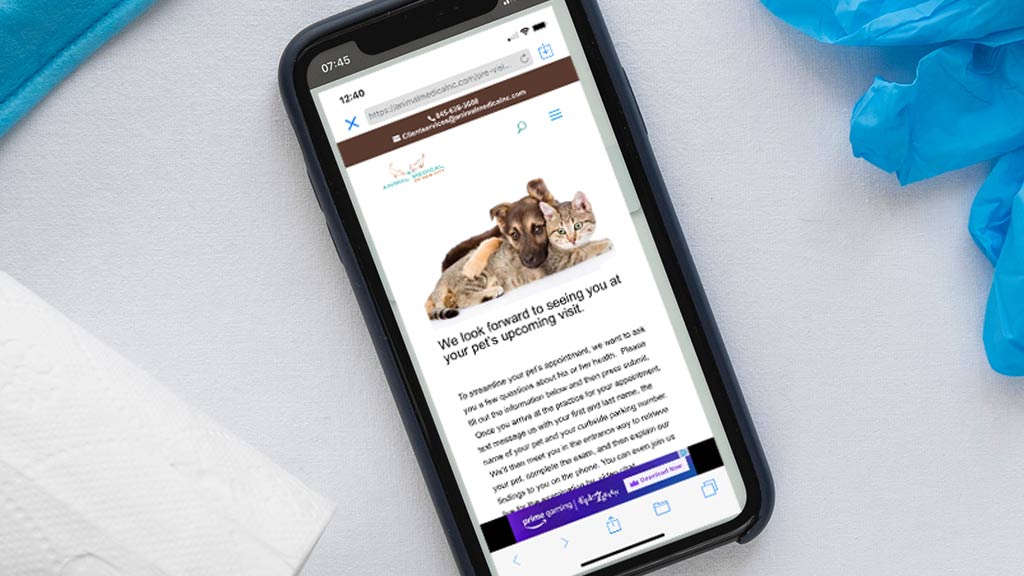Despite complaints of burnout, employee unhappiness, lackluster retention, and lower productivity, American veterinary hospitals persist in an outdated approach to hiring, training, reviewing, and disciplining team members. Should we continue to lead with HR practices that appear to be falling short of meeting the needs of our beleaguered workforce?
Opportunity
The stakes are high for attracting, hiring and retaining employees invested in care and service. Despite the end of the pandemic and eye watering high prices across many sectors of the economy, demand for accessible, quality veterinary care remains high. Businesses that can deliver a caring, affordable, on-demand veterinary care experience have the potential for profit and team fulfillment.
What You Need
In my 20+ year career, I have visited many hospitals. The biggest driver of success is a leadership team that is emblematic of the great service and care the company aspires to provide.
Remember that as you move forward with refining your HR protocols: though some kind of rigidity and order to HR may be necessary for labor law compliance, the difference between good and great teams is not proportional to the thickness of its employee handbook. Employees at the best practices come to understand a company’s greatness through the words and actions of those that lead, and through the support and trust they experience under their supervisors. Teams come to be great having first seen what greatness looks like firsthand.
Core Attributes of Great Team Members
There are several qualities that prove to be consistently foundational to team greatness.
Employees are Engaged by the Mission
:
Employees inherently like the idea of working in the company of others to help clients and the pets that they own. They have the ability to be patient with the process because they don’t lose sight of or interest in the purpose.
Individual team members have high emotional intelligence
We often say that our jobs require multitasking. What we mean, usually without knowing it, is that we are interested in hiring people with high emotional intelligence. Emotionally intelligent individuals are ones that often take flight during work and are what we often refer to as ‘street smart’. They’re compassionate, self-reflective, good at ‘reading the room’, open to ideas and feedback, and have a history of personal growth and ambitions for more. There are tests for emotional intelligence and questions that you can ask during interviews that screen for it.
They Like Us and We Like Them
Teams that thrive are ones where the employees like one another. Coming to work, on some level, feels like playing with friends. Individuals want to help coworkers, bring them food, make them laugh, see them happy. The same is true for how they feel about their employer. Employees give their all to their jobs, not because they fear her, but because they like her and they don’t want to let her down.
Hiring
Capturing the Interest of Quality Candidates
Added: Since the pandemic, we have convinced ourselves that the snare for quality candidates is baited with cash, but more money is only marginally alluring. Here are the ways the best companies in America consistently attract the best in the market:
-
- Build a strong reputation and an attractive brand: Companies like Apple, Google, Starbucks, Netflix, Amazon have been building a reputation, both with consumers and clients, for years. Even those of us who know nothing about computers or coffee are likely to believe that working for one of these companies would be a big deal.
-
- Introduce potential employees to the job place: Larger hospitals offer Internships, onsite training for outsiders, summer work for vets, remote work for vets in school and so forth to help candidates see the job site with their own eyes and to percolate ideas of long term employment even before they are qualified for the job.
-
- Create a great hiring experience: Companies like Google work hard at creating a hiring experience that is marked with respect and positivity throughout. Other greats like Sales Force ensure that all candidates are greeted warmly by existing employees, drawn into conversations, and made to feel as though they would be warmly welcomed into the group if hired.
-
- Offer attractive compensation and benefits: Competitive benefits and wages lure quality applicants, but remember that money is not usually a top hiring motivator. Those listed above are more powerful.
-
- Help the candidate see future personal growth: The best organizations help candidates see that employment will result in personal and professional growth.
-
- Create an employee testimonial video: Companies like Veteo can create a personalized, high quality video that showcases your hospital and tapes your most enthusiastic employee testimonials. Place the video on your website and broadcast it on YouTube, Facebook and Instagram. Many candidates like this soft introduction to your workplace and their potential future coworkers.
Second Step. Get her to show up.
Has another terrific candidate skipped their interview or failed to show up for her first day of work? It’s not uncommon. Businesses across America (and in Europe!) report higher levels of ‘ghosting’, employees that simply don’t show up for their interview or first day of employment. Experts believe there are four major reasons.
-
- The Job Market is Still Tight: The brightest job seekers are receiving multiple offers, reducing the urgency to attend all scheduled interviews.
-
- Remote Work Preferences: Many candidates now prefer remote or hybrid work opportunities. If they get another interview with these options on the table, they skip yours.
-
- Technological Barriers: Many candidates have been applying online. The process leaves them feeling that no-showing is not that big of a deal.
-
- Tit for Tat: Workers have been ‘ghosted’ by employers during the hiring process so they don’t feel like it’s that big of a deal.
Though professional recruiters do not think this trend of vanishing candidates is going to change much in the next coming years, I’m more sanguine. Unemployment levels are higher, prices remain high, and artificial intelligence is starting to outcompete workers for entry level positions. Could the day be coming when we once again have a more capable applicant pool from which to choose?
The Screening Process
The screening process should be marked by three things:
Timeliness
You should respond to an application within 12 hours of submission. If you don’t, the applicant will likely drift elsewhere. Similarly keep the application process moving forward quickly. Not responding to an applicant’s communication signals, rightly or wrongly, that you aren’t interested or don’t care.
Testing for Interest and skills from the outset
Ensure that candidates are truly interested in the job by asking them to so something extra in the application process. For my part, I always ask candidates to use the cover letter portion of the Indeed website to ‘write three or four lines why you think you would be a great match for our company.’ Since this portion of the applicant’s submission is visible without a lot of clicks, I can immediately see whether or not they can and have followed direction. Applicants that don’t complete this simple task are automatically sent a regret letter. As a practice, make sure that you respond to every candidate with either a letter inviting them to continue the application process or a regret letter. This kind of respectful interviewing process builds your brand and your reputation with applicants that could also one day be clients!
An online questionnaire that saves you time and further screens
If you open the application and like the candidate, send them an online questionnaire that asks them more specific questions about skills, their available hours, etc. Online screening questionnaires can be built through Indeed or created free-of-charge on your WordPress website. Screening tools further assist with weeding out applicants, not just because you can see whether an individual would be a match, but because only 25% of applicants fill them out!
If the candidate fills out the screening tool and sends it in and you like what they have written. You can invite them in for an interview.
The Interview
The interview should be marked by two important components
- A welcoming atmosphere: Ensure your entire team knows that an applicant is expected. Make sure they know how valuable it is to welcome them, not only as a way to make them feel safe, but as a way to get a feel for whether or not they are a match.
- A conversational interview process free of ‘gotchas’. Don’t grill your candidates, after all they’re a potential hire, not a hotdog. Take time to settle in to talk to someone you would like to get to know. Once the applicant has warmed to the environment and to you, ask questions that screen for emotional intelligence. When listening to answers, you are looking for these ingredients:
-
- Thoughtfulness: Candidates with high emotional intelligence often reflect on past experiences, acknowledge areas for improvement, and demonstrate how they’ve grown or adapted in response to challenges.
- Empathy and understanding: Empathetic candidates will often express understanding of others’ feelings, showing an ability to step into another person’s shoes and respond with sensitivity.
- How he or she manages Problem-Solving: Emotionally intelligent candidates are not only aware of emotions but can manage them to solve problems effectively. They remain calm under pressure and approach challenges with composure and thoughtfulness.
- An Openness to Feedback: Candidates who welcome constructive criticism and use it as an opportunity to improve demonstrate strong self-awareness and emotional regulation.
- Nuance and positive interpersonal skills: Socially adept candidates will describe positive, proactive ways of building relationships, managing conflicts, and influencing others, showing they prioritize healthy interaction
Onboarding
There are two parts of the onboarding process that I believe should be improved:
-
- Reviewing the employee and safety manual
-
- The job as described versus the job as experienced
Reviewing the Employee and Safety Manual
Picture it. You bought flowers, paid for dinner, picked out the perfect ring, even got down on one knee, then on the big day, all the air went out of the balloon when you handed your prospective partner a prenup. That’s what comes to mind when I think of our first day with the employee as we go over the employee manual. Even if the two of you can manage to stay awake through this long, page-by-page process, just think about the tone of the messaging:
Cute Critters Animal Hospital (hereafter CCAH) is an at-will employer, which means that employment can be terminated, with or without cause, at any time at the option of the employee or CCAH. No employee has the power or authority to enter into any agreement of employment, for any specified period of time, or to make any representations or agreements contrary to this policy unless the agreement is in writing and approved by the Owner.
While I appreciate the litigiousness of the world we live in; whilst I understand the value of reviewing important documents like the employee manual with employees, there has got to be a better way to onboard employees than squashing every previous conversation beneath this overweighted pile of legalese. Here are some tips on how to improve this experience:
It doesn’t have to sound like an attorney wrote it.
While employee manuals help to protect employers from labor law infractions, they don’t have to sound like employees are being read their Miranda Rights. Work with your attorney to soften the employee manual’s language so it’s not so aggressive and reads more positive.
Show but Don’t Tell
Having a written employee manual doesn’t mean that you have to read it to the employee. If you don’t want to go to the trouble and expense of rewriting your manual, create a one-or-two page review sheet that briefly describes the manual’s contents and keeps things positive. At the end of the review, give the employee a copy of the full manual and leave it to them to read things on their own.
Create an introductory video
You can also save yourself the time of having to go over the manual again and again by creating a video of its contents. Record various team members talking about policies contained in the manual and play the tape to candidates on their first day. Keep the tone upbeat and welcoming in line with the narrative that you’ve been underlining during the entire hiring process. When they are finished, hand them the written version.
The job that’s been described versus the job that’s experienced
If you are a large and/or busy practice, what you say you are and what you appear to be through the eyes of a fresh employee can be very different. In fact, releasing your latest hire onto the floor may feel akin to throwing a milk bone to a pack of dogs. If your team is like so many other veterinary hospital groups these days, it is rushed, stressed, potentially uncivil, bad mouthed, and brusque. Though it will take you some time to accomplish this, you need to remind your team to see and do their work in the context of the mission, not in the context of ‘just deal with it!” Certainly not an easy goal, but an important one if you want to ensure that your latest hire is a step towards your goals, not an addition to your problems.
For more on the remaining mileposts of a great HR system, visit the following links
Halow Consulting, The Veterinary Safety Manual and Introductory Safety Training
Halow Consulting, Veterinary Employee Training a Learning
Halow Consulting: Veterinary Reviews and Coaching
Conclusion
We’re operating in a very different world. Workers are more prone to stress; we have a much tighter applicant pool; and stiff competition means that we need to be at the very top of our game. The old ways of hiring, training and coaching were never that great to begin with and these added workforce complications only further highlight their deficiencies. As a leadership team, revisit what you are trying to accomplish with your business and the kinds of people that you need to help you achieve such goals. We are living in a time rife with imaginative HR management practices. Discuss and further explore the ideas I have presented to you. You and your team deserve a fresh injection of inspiration and success.

An In-person Lunch and Learn For Your Team?










